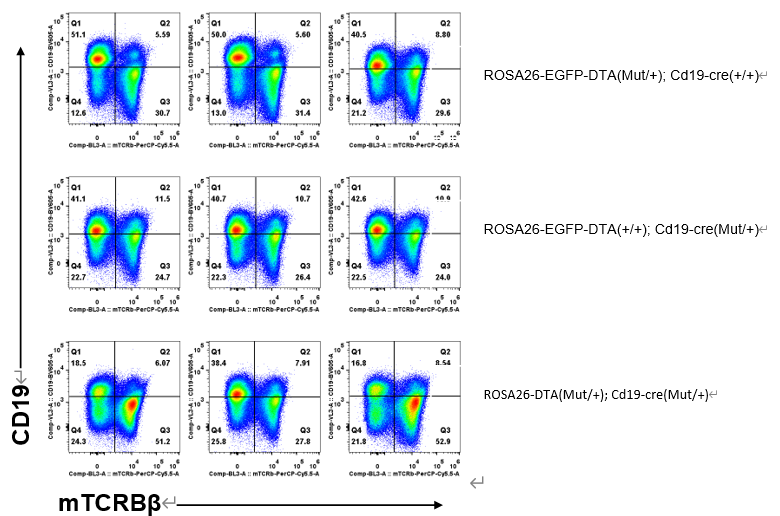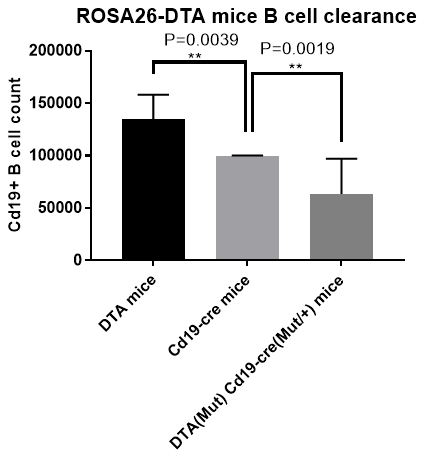| Strain Name |
|
Stock No. | 110156 |
| Common name |
B-ROSA26-EGFP-DTA mice |
Gene symbol and name | gene trap ROSA 26 |
| Strain of origin |
C57BL/6 |
Chromosome | 6 |
| Coat color | Black | Dietary information | Growth and reproduction diet for experimental mice |
Application
- Function research of genes
- Deletion of specific groups of cells
Expression
Expressed gene
DTA, Diphtheria toxin fragment A; EGFP, enhanced green fluorescent protein
Site of expression
The mutant mice will display widespread expression of EGFP, after removal of the flanked STOP cassettes by FLP-recombination. When the ROSA26-EGFP-DTA mice mated with the mice Cre recombinase expressing specially, the loxP-flanked EGFP and stop sequence will be removed, and DTA expression is activated, then resulting in the specific ablation of iCre-expressing cells.
Gene editing strategy

The ROSA26-EGFP-DTA allele has a frt-flanked STOP sequence (2xSV40 pA-lox2 stop) and a loxP-flanked STOP sequence (EGFP-Neo-3xpolyA) upstream of the diphtheria toxin A subunit (DTA) gene. After removal of the flanked STOP cassettes (2xSV40 pA-lox2 stop) by FLP-recombination, mutant mice display widespread expression of EGFP, but DTA transcription is still prevented by the strong transcriptional stop sequence(EGFP-Neo-3xpolyA). When bred to mice that express Cre recombinase under the control of a promoter of interest, the floxed-STOP cassette is removed and DTA expression is activated - resulting in the specific ablation of the cre-expressing cells. Homozygous mice are viable, normal in size, and do not display any gross physical or behavioral abnormalities. The donating investigator reports that some homozygous males are subfertile.
ROSA26-EGFP-DTA mice may be useful on their own as a fluorescent reporter, or in combination with cre-expressing mice to produce conditional deletions of specific groups of cells. ROSA26-EGFP-DTA mice may also have applications in toxicology and protein synthesis research.
Phenotype Analysis


B cell from spleen, Flow
cytometry analysis showed that the number of B cells specifically expressing
Cre recombinase was significantly reduced in single cells of spleen, which
proved that B cells specifically expressed DTA, and DTA successfully cleared B
cells in spleen.
reference
1. Lee PP, Fitzpatrick DR, Beard C, Jessup HK, Lehar S, Makar
KW, Pérez-Melgosa M, Sweetser MT, Schlissel MS, Nguyen S, Cherry SR, Tsai JH,
Tucker SM, Weaver WM, Kelso A, Jaenisch R, Wilson CB. A critical role for Dnmt1
and DNA methylation in T cell development, function, and survival. Immunity.
2001 Nov;15(5):763-74. doi: 10.1016/s1074-7613(01)00227-8. [PMID: 11728338]









